Unlock the Magic in Your Story Now
Get the Free 20 questions to Ask Before Launching Your Idea workbook when you sign up for occasional updates.
Get the Free 20 questions to Ask Before Launching Your Idea workbook when you sign up for occasional updates.
My New Book—Marketing: A Love Story
filed in Marketing, Storytelling, Strategy
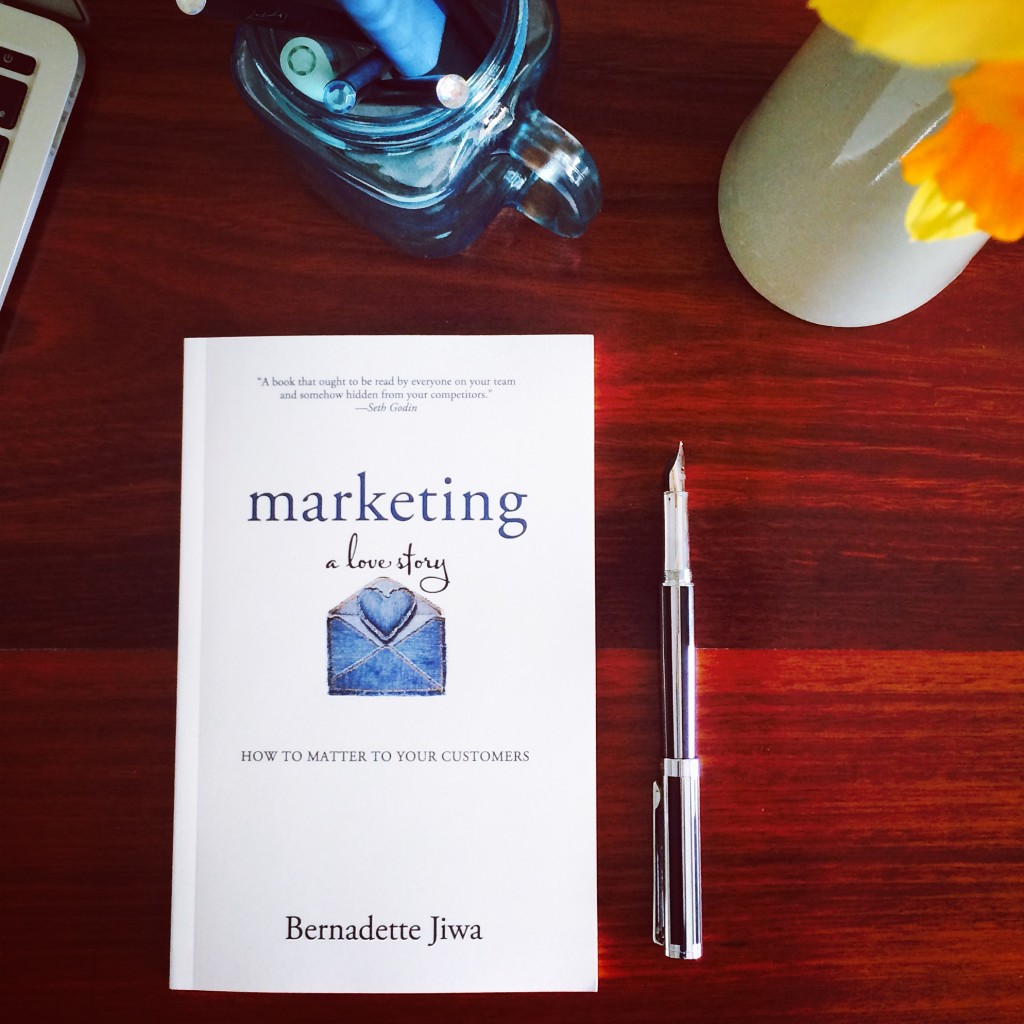 My new book is here. You can buy it now on Amazon in paperback and in Kindle.
My new book is here. You can buy it now on Amazon in paperback and in Kindle.
I’ve wanted to find a way to juxtapose the concepts of marketing and love in a book for a long time. I like to think that even if you never opened the book, just owning it—seeing it on your bookshelf or in your Kindle library, will remind you that having the courage to take your ideas, products and services into the world to serve people who need them is an act of love.
You owe it to your right customers not just to be found, but to matter.
I hope this book helps you to get there.
Some parts of the book have appeared unedited on the blog and I have added new, previously unpublished bonus material to the manuscript. The book is divided into three main sections; STRATEGY, CONTEXT and STORY, which gives you a framework for thinking about how these ideas relate to your business. And everyone knows that the ideas in a book stick with you in a way a blog post never can.
My hope is that we stop thinking about marketing as a necessary evil and we start using it as a vantage point for seeing the world through the eyes of our customers and the people who need us. Once we start showing up with the right intention we can begin to make great things happen.
Thanks for allowing me to write for you and for supporting these ideas. This book would not exist without you.
Share this article
The Two Approaches To Marketing
 All marketing uses two basic approaches. When I was growing up and maybe when you were too, marketers used ‘The Influence Method’.
All marketing uses two basic approaches. When I was growing up and maybe when you were too, marketers used ‘The Influence Method’.
1. The Influence Method
Make a product. Create an advertising campaign, jingle or tagline to persuade people to want whatever you are selling. Increase sales. Make more products. Buy more ads. Rinse and repeat.
It’s getting much harder to sell things because they ‘snap, crackle and pop’.
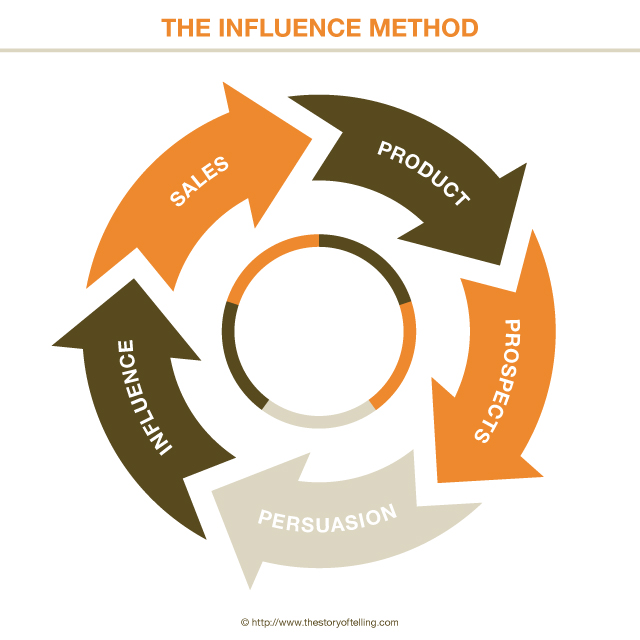
2. The Impact Method
The approach that’s working now for brands and businesses who want to matter to their customers is ‘The Impact Method’. Find a group of people you are interested in serving. Understand their problems. Get their permission to talk to them. Create a solution that delights and impacts them. Serve more people. Do it all over again.
It’s easier than ever to find and create difference for a group of people you care about serving.
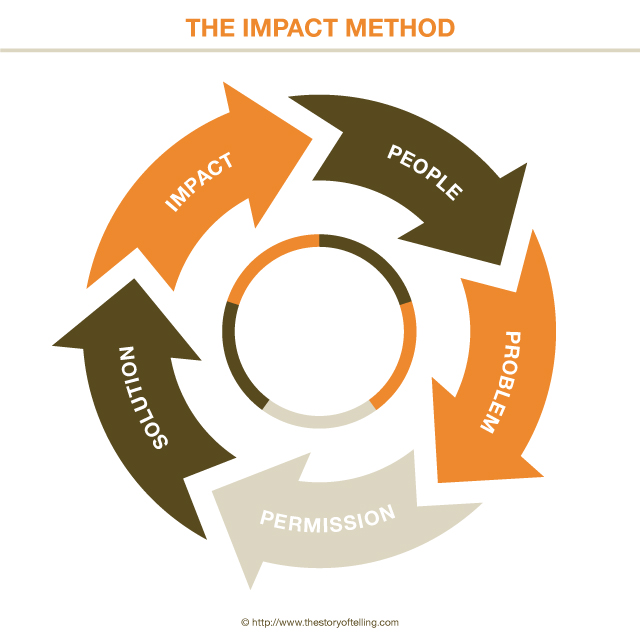
It’s not difficult to work out which approach is the more sustainable. Which one are you choosing?
Image by Carlota.
Share this article
Efficiency, Quality, Value And Soul
filed in Marketing, Storytelling, Strategy
 A new public hospital is opening in Perth this week and along with cutting edge medical facilities patients can expect a state-of-the-art “free-roaming food delivery robots”. Our local newspaper reported that, “The 300kg AGVs will deliver up to 2200 meals a day, directly to wards without human intervention, once they leave the kitchen.” The theory being that quality will be improved if the time between cooking and delivery is reduced.
A new public hospital is opening in Perth this week and along with cutting edge medical facilities patients can expect a state-of-the-art “free-roaming food delivery robots”. Our local newspaper reported that, “The 300kg AGVs will deliver up to 2200 meals a day, directly to wards without human intervention, once they leave the kitchen.” The theory being that quality will be improved if the time between cooking and delivery is reduced.
The system is efficient and if the temperature of the meal when it reaches the patient is the measure of quality then this high tech solution wins—but do absolute improvements in quality always increase value?
A hospital administrator who can point to savings and reduced labour costs over time has data to prove efficiencies. It’s assumed that efficiency and value go hand in hand. But value is subjective, not absolute and in many business settings we underestimate the value of things that we cannot measure. We know that even expert opinions of quality can be subjective. Yes, it’s true that wine labels really do change the perception of the contents of the bottle.
Perhaps the value, or even the enjoyment of the meal served to a sick person can’t be measured by how quickly it was served? Maybe how it got there, who brought it and how they interacted with the patient matters too? Often the people who get closest to patients in hospital wards are not the highly qualified medical team who treat, or specialist nurses who monitor—they are the people who carry out the routine tasks of wiping down bedside lockers, filling water jugs and delivering meals.
It’s easy to argue for more humanity when we’re talking about how we design environments and public services for people when they are at their most vulnerable. But the efficiency vs. soul conundrum is worth considering in relation to products we create and services we sell.
Remember back to the first time you used an iPod and contrast that with your experience of an MP3 player of the time. What you probably sensed was the intention behind the design. Imperceptible details that made the iPod more than something that was simply functional. You knew that a person who cared had tried to experience the world through your (the future user’s) eyes and thus created more than a utilitarian device.
The interesting thing about many of the successful upstart businesses born from the digital revolution we are living in, like Warby Parker, Airbnb, Uber and Task Rabbit is that despite being predominantly digital businesses they have found ways to put the humanity and soul back into service industries that had been stripped of those things, often for the sake of efficiency.
It turns out that imperfect people like us don’t always want the most perfect of solutions. When we have a choice, we choose and value soul over efficiency almost every single time.
William Bruce Cameron’s words have never felt more relevant than they do today.
“It would be nice if all of the data which sociologists require could be enumerated because then we could run them through IBM machines and draw charts as the economists do. However, not everything that can be counted counts, and not everything that counts can be counted.”
———
Thanks to my son Kieran for nutting this one out with me and for being the amazing person he is—one who talks about nurturing food and phones having soul.
Image by Emily Barney.
Share this article
Make Things People Want
filed in Marketing, Storytelling, Strategy
 Marketing means different things to different people. To some businesses it’s about Facebook engagement, to others it’s all about analytics or SEO, advertising or PR. If you’ve got the budget it could be a glossy image of Hugh Jackman—your 18K red gold watch, which has been “Crafted for New Heights” peeking from under his freshly starched white shift cuff.
Marketing means different things to different people. To some businesses it’s about Facebook engagement, to others it’s all about analytics or SEO, advertising or PR. If you’ve got the budget it could be a glossy image of Hugh Jackman—your 18K red gold watch, which has been “Crafted for New Heights” peeking from under his freshly starched white shift cuff.
Marketing as we have known it was designed to make us fall a little more in love with something. We’ve spent all this time trying to make people want things and do things, when all the while we should have been making things people want and doing things they want us to do.
If you can’t afford Hugh (or even if you can), it’s not too late to start mattering to people.
Image by Marina Burity.
Share this article
Close, Closer, Closest
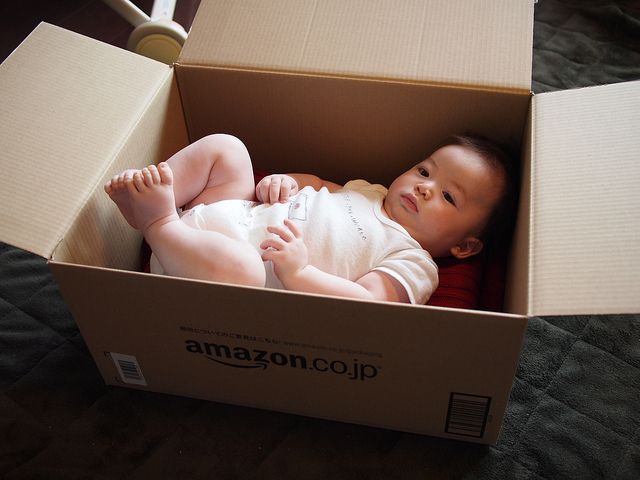 Twenty years ago geography mattered. When there was one grocer in every suburb there was always enough business to go round. Close was an advantage.
Twenty years ago geography mattered. When there was one grocer in every suburb there was always enough business to go round. Close was an advantage.
It’s easy to believe that because digital has dissolved borders, that it has simultaneously diluted advantages.
But being close has taken on a whole new meaning. Closer has become more nuanced and presented an even bigger opportunity to understand our customers and add value. Today every CEO is one tweet away from her customers. Every Etsy store owner a click away from another continent. Our bookstore knows what we love to read and even our thermostat understands us.
We know that whoever gets closest to their customer wins and that’s never been more true than it is in a world where you are not limited by the boundaries that domain knowledge, distance or even monopolies once created.
Image by Fuga Tabetai.
Share this article
Which Would You Choose?
filed in Marketing, Storytelling, Strategy
 If you could only pick only one of the following, which would you choose?
If you could only pick only one of the following, which would you choose?
1. Would you like more people to know about you, your product or service?
OR
2. Would you like your existing customers to be blown away by you, your product or service?
Awareness doesn’t always scale.
But creating difference for your customers—enabling and mattering to people can’t help but lead to growth in the long run.
What are you committing your resources and energy to?
Share this article
How To Get Attention
 Everyone will tell you that in the age of distraction it’s harder than ever to get attention. Actually that’s not strictly true. It’s not difficult to interrupt the rock star as she checks into her hotel to ask for a selfie—just a quick tap on the shoulder, fake smiles and you’re done. It’s easier than ever to spam whoever you want to reach because most people are just an email address and a click away.
Everyone will tell you that in the age of distraction it’s harder than ever to get attention. Actually that’s not strictly true. It’s not difficult to interrupt the rock star as she checks into her hotel to ask for a selfie—just a quick tap on the shoulder, fake smiles and you’re done. It’s easier than ever to spam whoever you want to reach because most people are just an email address and a click away.
If your goal is to get and leverage someone’s attention for a split second (even if that someone is the Queen of England), then of course you can. And link bait works for a little while.
The kind of attention I think you’re after though, isn’t this meaningless, fleeting interaction. It’s based on mutual respect and trust—the kind of interaction that’s wished for, welcomed and wanted. It’s given, not taken; anticipated, not simply tolerated.
The best way to get attention then is to give it unconditionally first.
To really understand the worldview your customers and colleagues.
To anticipate what people need and want.
To do things without considering what the payback might be down the line.
To create experiences without calculating what the return on investment will be tomorrow.
To stop expecting and begin caring.
To start whispering, “I see you”—instead of screeching, “LOOK AT ME”.
We don’t have to follow the pack or conventional wisdom and we don’t have to look for an angle to leverage. We each get to choose how we show up in the world and how our businesses are run.
Share this article
Knowing ‘The How’ Is Not Enough
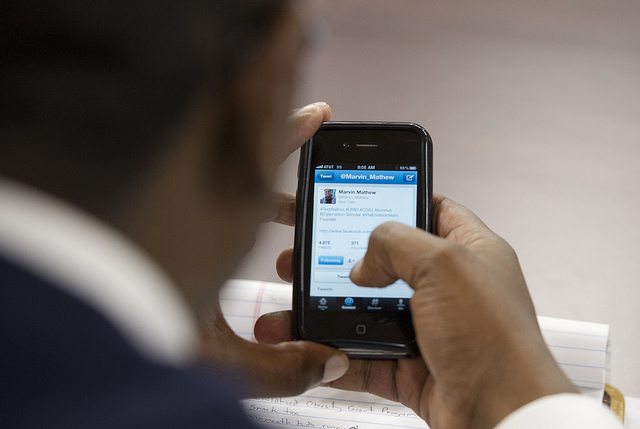 When that friend you haven’t seen for ages shows up at the party in a figuring hugging dress having dropped two sizes, the first thing you say is, “You look great!
When that friend you haven’t seen for ages shows up at the party in a figuring hugging dress having dropped two sizes, the first thing you say is, “You look great!
The second thing you say is, “How did you do it?”
And so it goes when we see evidence of any kind of success in life and in business.
If only Samsung could work out exactly how Apple grew a cult following. If only we knew how to get as much engagement on Twitter as the Oreo cookie. If only there was a step-by-step guide to doing work that touches people.
We want the specifics, the tactics, the fool-proof method.
It turns out that success is less dependent on ‘the how’ and more dependent on ‘who for’ and ‘why’.
It’s far more important to have something to say—something that the right people want to hear or care about, than to be a master of the tools and tactics.
Image by Maryland Gov.
 What’s your reason for contacting that prospect?
What’s your reason for contacting that prospect? Any one of a number of giant companies could have been first to market with a bagless vacuum cleaner. They all knew that their cleaners lost suction when dust bags became full. They also knew how their customers wrestled to empty dust bags while being enveloped by the dirt they’d just sucked up out of their carpets. Taxi companies were aware that people found waiting for cabs frustrating and watching the meter running while they were stuck in a traffic jam unnerving. Big hotel chains understood that their guests wanted a more personal service and resented the inflated prices charged for items from the minibar.
Any one of a number of giant companies could have been first to market with a bagless vacuum cleaner. They all knew that their cleaners lost suction when dust bags became full. They also knew how their customers wrestled to empty dust bags while being enveloped by the dirt they’d just sucked up out of their carpets. Taxi companies were aware that people found waiting for cabs frustrating and watching the meter running while they were stuck in a traffic jam unnerving. Big hotel chains understood that their guests wanted a more personal service and resented the inflated prices charged for items from the minibar.